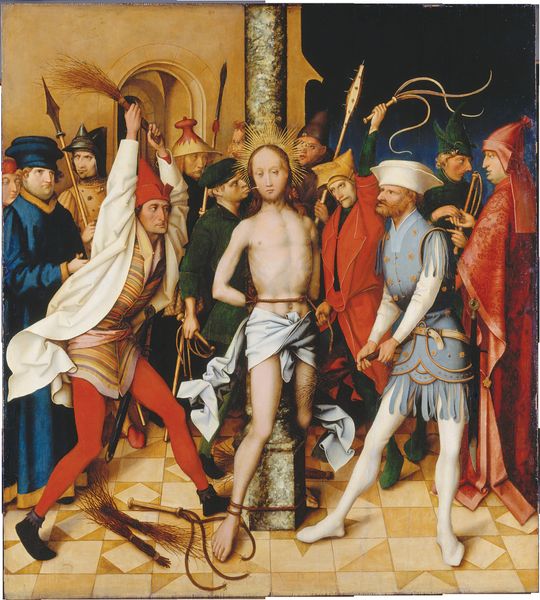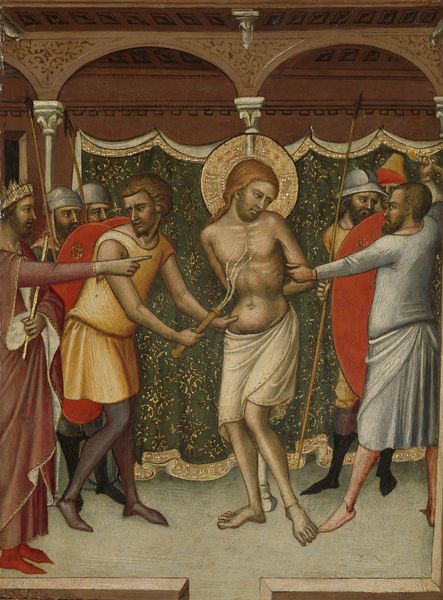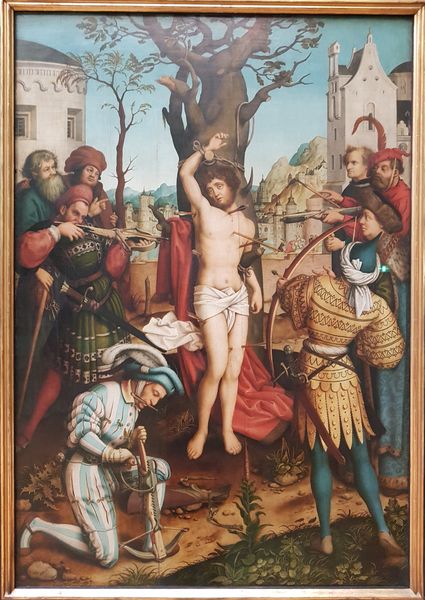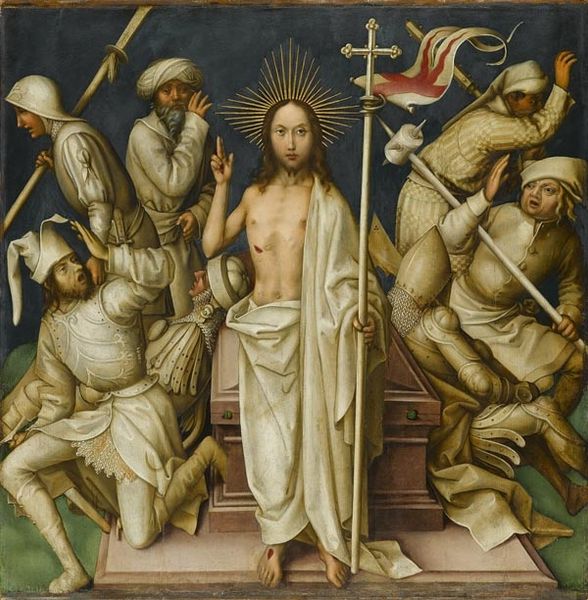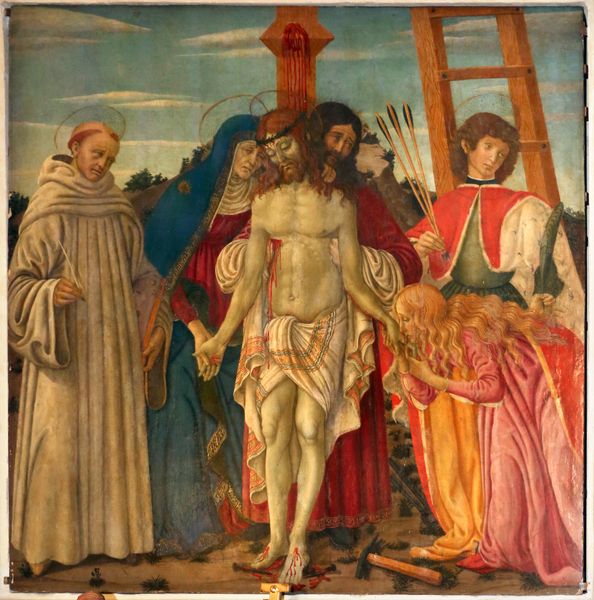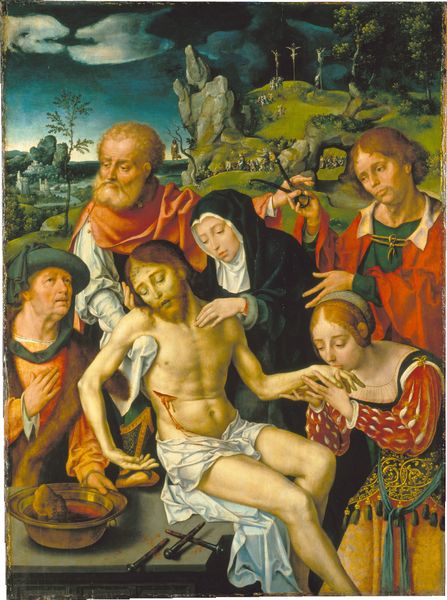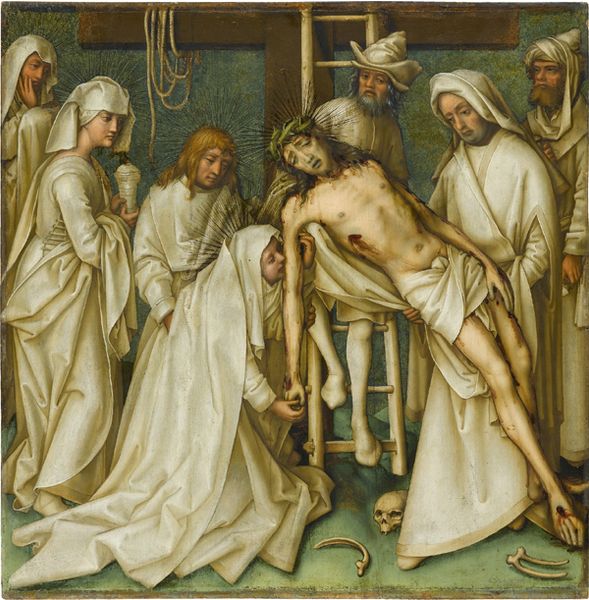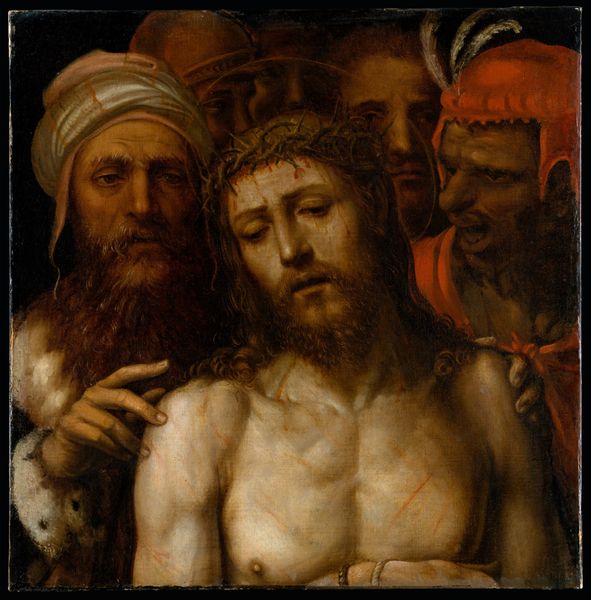
Ecce Homo (Grey Passion-6) 1500
0:00
0:00
hansholbeintheelder
Staatsgalerie Stuttgart, Stuttgart, Germany
tempera, painting
#
portrait
#
gouache
#
narrative-art
#
tempera
#
painting
#
figuration
#
genre-painting
#
history-painting
#
academic-art
#
early-renaissance
Copyright: Public domain
Curator: This is Hans Holbein the Elder’s tempera and gouache painting "Ecce Homo," created around 1500. You can find it on display at the Staatsgalerie Stuttgart. Editor: Its muted palette is immediately striking. Almost monochrome. It conveys a palpable sense of coldness, both physical and emotional, radiating outward from the figure of Christ. Curator: Note how Holbein structures the composition. The figures surrounding Christ act as framing devices, directing our gaze to the central, isolated figure. The artist employs a distinct lack of idealization in the faces and figures, grounding the scene in a stark reality. Editor: Yes, the figures loom in, bearing symbols we still understand today –the crown of thorns, the binding at his wrists. Even in the gray rendering, we see how Christ is both the King of suffering, represented by the crown, and powerless in shackles. There's an undeniable potency to these repeated emblems of Christian sacrifice. Curator: Holbein is manipulating the visual elements to draw a clear parallel. He arranges the planes, creating a sense of compressed space, and directs the perspective to concentrate attention on the drama unfolding. Look closely at the geometric structure. Editor: But what strikes me are the symbolic implications of the garments and colors. While a primarily gray scheme mutes color, white gowns denote a certain purity and grace ironically present in the executioners. The halo is one the few sources of true gold. I consider what Holbein emphasizes with its use, and how that ties to long traditions. Curator: The material reality – tempera, gouache – these add a particular texture and visual depth that reinforce the formal elements. How those choices manifest in the work speaks to a structural integrity. Editor: Precisely. Holbein interweaves symbolism and striking materiality. Together they deepen our reflection on enduring stories of faith and human cruelty. It is an impressive confluence of emotional iconography rendered with notable skill. Curator: The success, in short, lies in the relationships created across elements: the figures, setting, and composition converge powerfully. Editor: Indeed, an artist of considerable insight, clearly attuned to the visual codes that resonate profoundly.
Comments
No comments
Be the first to comment and join the conversation on the ultimate creative platform.

